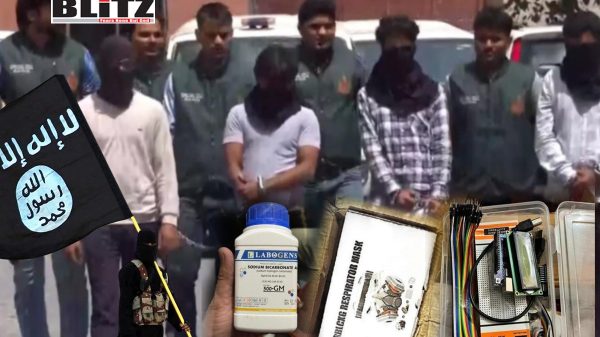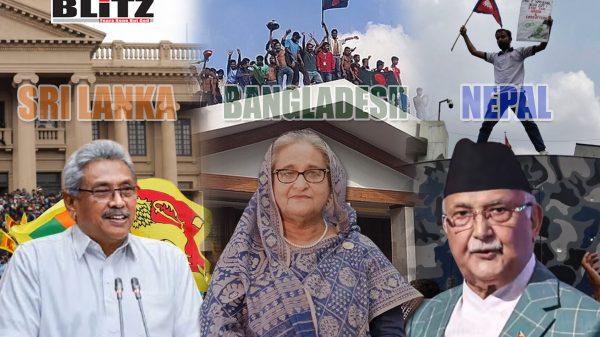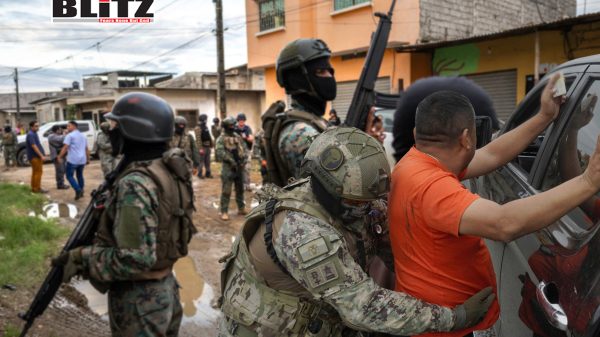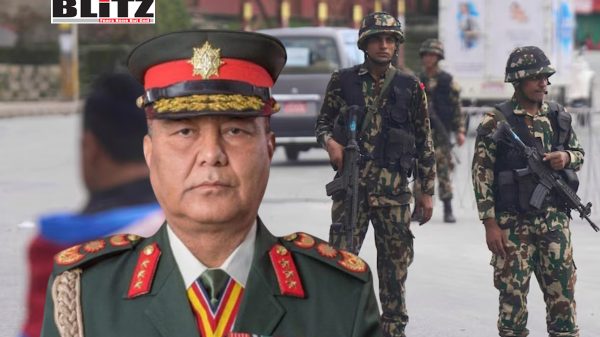Delhi’s ISIS module exposed: The alarming rise of micro-Jihad in India
- Update Time : Saturday, September 13, 2025

The Delhi Police bust was not an endgame—it was the prologue. What investigators seized was less significant than what it revealed: that the theatre of jihad has shifted from borders to browsers, from mountains to minds. Unless New Delhi recognizes that the war is being waged inside classrooms, mosques, and digital networks, it will remain reactive—arriving after the blast has been averted, while the script of grievance spreads unchecked.
From raids to realization
The Delhi Police, working across four states, arrested five men linked to an ISIS-inspired module—in Delhi, Jharkhand, Madhya Pradesh, and Telangana. These were not hardened foreign fighters; they were young Indians adopting code names like “CEO” and “Professor.” Their capture prevented explosives from reaching targets, but it also underscored how enemy states no longer need to smuggle RDX or infiltrate trained militants. They simply weaponize grievance, and wait for cells to sprout in the cracks of India’s social fabric. This bust was not a routine policing achievement—it was a snapshot of a much larger battle now being waged in the shadows.
The weaponization of grievance
For decades, Pakistan and its intelligence arms have refined grievance into a political weapon. The ‘Khilafat model’ and ‘Ghazwa-e-Hind’ narrative thrive on persuading impressionable youth that they are perpetual victims of an unjust state and that violent resistance is sacred duty. This narrative-building is not accidental. It is cultivated by NGOs, repackaged through selective media, and broadcast in online echo chambers. According to assessments by the US Institute of Peace, since 2021 the Islamic State Khorasan Province (ISKP) has significantly expanded its influence in South Asia, specifically by pushing grievance-driven propaganda into vulnerable communities. The Delhi cell digested this propaganda and converted it into operational intent—proof that radicalization now flows seamlessly from encrypted chat rooms into physical networks. What once required camps in Afghanistan can now be achieved in a student hostel in Ranchi.
From guns to minds
In the 1990s and early 2000s, India’s chief worry was cross-border outfits like Lashkar-e-Taiba or Jaish-e-Mohammed sending men and munitions into Kashmir. Mumbai 2008 showed how spectacular violence could be staged with just a handful of trained men. But today the frontline is different: it is the battle of narratives. The Delhi module’s hybrid plans—IEDs, fedayeen strikes, targeted assassinations—were not just tactical options. They were designed to project India as unsafe and divided. Each intercepted manual, each foiled plan, becomes a propaganda tool in itself. Enemy states have learned that while India can intercept consignments of explosives, it is far harder to police a WhatsApp group in Ranchi or a Friday sermon in a small-town mosque. The war is psychological before it is kinetic.
Case study: Pune’s sleeper cell
This is not abstract theorizing. In 2023–24, Pune police exposed an ISIS sleeper cell of 11 individuals, some trained in reconnaissance, bomb-making, and radical content dissemination. They were apprehended long before carrying out an attack. That case, like the Delhi bust, shows the battle has moved upstream: violence is incubated in minds long before a bomb is built. The Pune case also revealed how radicalization is decentralized, with operatives trained to disseminate content as much as to build explosives—narrative warfare first, physical violence second.
According to the National Crime Records Bureau (NCRB), between 2018 and 2023, over **1,700 cases** were registered under terror-related provisions across India, with **Madhya Pradesh, Maharashtra, and Delhi accounting for nearly 40%** of them. This is not an abstract trend: it is a quantifiable picture of how radicalization is embedding itself in the country’s heartland.
The dangerous middle layer
The greatest danger lies not in the hidden IED or anonymous Telegram handle, but in the permissive climate that enables them. Every unchallenged slogan labelling India ‘oppressive,’ every so-called civil society report that subtly justifies jihad as resistance, every pulpit that seeds division—all form part of the same ecosystem. India’s legal framework strikes at those plotting violence but often spares the enablers: academics, NGO-fronts, and selective voices who launder separatist rhetoric as dissent. Unless this middle layer is punished with clarity, India will remain perpetually on the back foot. Other democracies have learned this lesson the hard way: in Britain, preachers of hate were tolerated for years until London Bridge and Manchester revealed the cost. In France, the Bataclan massacre was enabled by networks long ignored under the guise of pluralism. India cannot afford such indulgence.
I recall interviewing Assam’s then-Chief Minister Tarun Gogoi in 2011, when he admitted—rarely for a sitting leader—that unchecked radicalization and infiltration were eroding Assam’s social fabric. That sense of permissiveness is what worries me most today: grievance allowed to fester becomes the oxygen for micro-jihad.
Micro-Jihad: The invisible battlefield
India’s security agencies excel at tangible threats—arms caches, infiltrations, sleeper cells. But the real battlefield is invisible. It plays out in small-town mosques, in student hostels, in online study circles where grievances are nurtured into ideology. This is micro-jihad: low-cost, decentralized, franchised. It does not require foreign travel or funding. It requires Wi-Fi, alienation, and a recruiter’s script. That script is already circulating. The International Centre for Counter-Terrorism (ICCT) has noted that despite losing territory, ISIS remained the deadliest terror organization worldwide into 2025. It now operates less like an army and more like a franchise, outsourcing radicalization to local grievances. India’s small-town radicalization fits this global shift. Burhan Wani in Kashmir became a symbol not through battlefield success but through social media mythmaking—a reminder that narrative icons are as dangerous as actual commanders. By the time an IED is assembled, the battle is already lost.
Fighting tomorrow’s Jihad with yesterday’s tools
To its credit, the Modi government has strengthened India’s security posture: modern border fencing, enhanced surveillance, and deeper intelligence cooperation with Israel and the U.S. Yet the Delhi bust proves that India is still fighting 21st-century jihad with 20th-century tools. Arresting five men with chemicals is necessary—but it is reactive. The jihad of today does not always cross the Line of Control with rifles. It emerges in Delhi’s suburbs, Hyderabad’s slums, and Ranchi’s lanes, cloaked in grievance but fueled by geopolitics. India needs a new arsenal:
– Digital counter-radicalization campaigns to neutralize propaganda.
– Integrated task forces linking state police, NIA, IB, and tech experts in real time.
– Community partnerships that empower moderate clerics to resist infiltration.
– Swift punitive action against enablers of separatist narratives in academia, politics, and finance.
Other countries have begun experimenting: Israel runs cyber units to disrupt radical content before it spreads, while Singapore invests heavily in community deradicalization. India must adapt or remain in a loop of arrests and press conferences.
The civilizational stakes
The Delhi Police deserve credit for averting a potential catastrophe. But to view this as an isolated success would be dangerous complacency. What India confronts is not a handful of militants but a replicable ecosystem of grievance politics, narrative warfare, and micro-level jihad—backed by enemy states and aided by domestic enablers. This is not counter-terrorism as usual. It is a test of civilizational survival. Unless New Delhi acts decisively—punishing separatist rhetoric, investing in narrative counter-strategies, and redrawing red lines—the war will be lost long before the next bomb is built. India, with its vast youth population and plural social fabric, cannot afford a France-style fragmentation or a UK-style radicalization crisis. The stakes are higher: this is about preserving the civilizational confidence that underpins India’s democracy.











